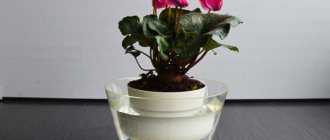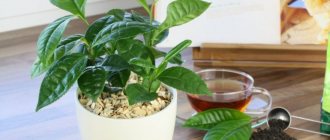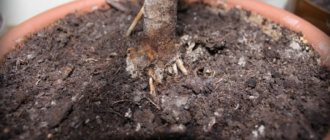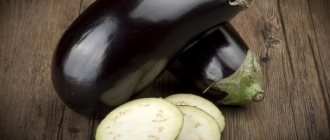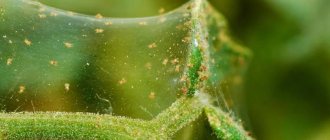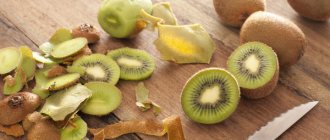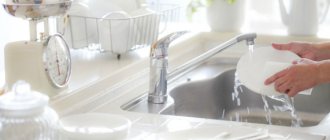Natural fertilizer is the optimal solution for plants and not just indoor plants. You can use anything: tea leaves, eggshells, citrus zest, mushrooms, and granulated sugar.
A valuable source of potassium, magnesium and phosphorus is banana skin . After simple processing it will become an excellent fertilizer. It will nourish the roots and stimulate flower growth. A very effective remedy in the fight against aphids.
Bananas saturate the soil with potassium, but aphids cannot tolerate this element. Next, we will consider whether banana peels are effective as a fertilizer for indoor plants , the correct preparation and use of such fertilizer.
What you need to know about feeding with banana peels
The use of this product as a fertilizer became popular only a few years ago . In Soviet times, banana skins were not used for feeding.
All because it was impossible to find this fruit on sale. No one thought about the beneficial properties of such a product. Today bananas are regular guests in the house, so there is a lot of peel left over.
Some tips for using banana peels :
- It is best to apply it in the spring.
- Fertilizing has the most beneficial effect on cyclamens, violets, ferns, indoor and garden roses, and begonias.
- If you infuse banana peels in green tea, its effect will be significantly enhanced. Within a week, the plants will become noticeably stronger and more beautiful .
- Fresh skins should be washed thoroughly. Before transportation, fruits are treated with chemical compounds. It is undesirable for them to fall into the ground.
- When drying raw materials, do not use an oven or microwave. This process should take place naturally. More than 50% of potassium is lost when heated .
- Rotten peels are not suitable for fertilizers.
Top dressing for roses
A popular tip is to bury banana skins under roses. However, this trick can be harmful because the banana can become a source of harmful pathogens that promote the development of fungal diseases. In order for potassium from the peel to get into the substrate, it must first decompose, which requires nitrogen from the soil. Therefore, it is better to use infusions. Nevertheless, flower growers respond very positively to feeding roses with banana infusions; roses begin to bloom more abundantly and longer.
The benefits and harms of banana feeding
The use of any fertilizers, including purchased ones, has both positive and negative aspects.
The clear advantages include:
- Helps save even very weakened plants .
- The skins are completely processed by microorganisms living in the soil within 10 days. This means that plants are not at risk of overdose.
- An excellent option for feeding during the flowering period . Banana peel contains a relatively small amount of nitrogen.
But banana fertilizer also has its disadvantages. Thus, the sweetish smell of bananas attracts insects . The infusion made from fresh skins has a particularly pungent smell.
Unwanted guests such as fruit flies, bees and ants may appear. It can be difficult to get rid of them.
Another unpleasant surprise is chemicals and hormones . You will have to wash the skins under running, warm water and soap. If this is not done, carcinogens, ethylene, wax and even remnants of hormonal drugs can be introduced into the ground.
So, bananas cannot be a complex fertilizer. You will still have to use other fertilizers. You cannot constantly add the same microelements.
Composition and properties
Banana peel contains a large number of elements beneficial to plants. The most important of them are:
- phosphorus, potassium - necessary for the formation of ovaries, long flowering, bright color of flowers;
- magnesium - activates the process of photosynthesis;
- calcium - improves the solubility of nutritional compounds and their digestibility by the plant;
- nitrogen - in a small amount, but sufficient for the development of the green mass of the flower.
Interesting! This fertilizer retains growth-stimulating hormones, which have a positive effect on the rapid rooting and development of the plant.
How to use the peel?
It can be called the cheapest feeding, but it is practically in no way inferior to store-bought products.
You can use it in several ways:
- Chop with a knife or scissors, and also place whole in tubs . This applies to fresh raw materials. The procedure is carried out during transplantation, the peel is laid out on the drainage.
- A powder is prepared from dry skins. They cover the top layer of the substrate before watering.
- You can also make compost .
- The peel is often used as a cleanser. They wipe the leaves of plants with it, removing dust from them and polishing them at the same time.
This video talks about the beneficial properties of bananas and how you can make excellent fertilizer for your garden and indoor plants from its peel.
How to water flowers correctly
First, find out the degree of soil moisture. So, watering banana peel infusion will bring maximum benefits. Despite a considerable number of recommendations for proper watering, there is no universal method.
To properly use banana peel infusion for watering, you should follow the basic rules:
- for desert type cacti and succulents, watering should be moderate in the summer, when the plants are actively growing;
- you need to provide sufficient space for watering so that the compost is 10-20 mm below the level of the edge of the pot;
- for plants that require moderate watering, it is necessary to saturate them with moisture in the summer, much less in winter, and allow the outer layer of compost to dry out between all waterings;
- most flowering plants require constant moisture support, and the compost should not always be wet - for this you should wait until the top layer of compost dries;
- few species (azalea, cyperus) need wet compost; an infusion of banana skins is often used for abundant watering.
How to make banana powder?
The peel must be washed thoroughly. Then wipe and lay out with the inside facing up . You can string the pieces on a regular thread and dry them.
When it is completely dry, it is turned into powder and poured into a jar with an airtight lid or in a vacuum bag.
Important! In dry form, such raw materials will be stored for a long time. The main thing is to close the container tightly so that the smell does not attract insects.
Add the powder simply: ½ tsp. or a whole spoon goes to one pot. It is enough to simply scatter it in an even layer over the surface of the earth . And then water the plant. Use no more than once a month.
It can also be applied during transplantation. The powder is mixed with soil (in the same dosage). Remember that after this, potash fertilizers cannot be used for the next 30 to 60 days.
Preparing banana peels for use
When buying bananas and storing their “clothing”, do not forget about the numerous ways to process tropical fruits. All harmful components will remain in the peel if the future fertilizer is not pre-treated.
Washing and even soaking in boiling or hot water may not completely remove all the chemicals, but freezing will deal with all of them without exception, while preserving the nutritional properties of banana skins. Therefore, there is no need to rush to feed the seedlings with this unique fertilizer; it is better to freeze it for several days and only then scatter it around the garden.
By following this simple rule, you can protect your seedlings from harmful substances by fertilizing them with an almost free natural remedy.
Fertilizers from fresh peels
After eating a banana, a yellow skin remains. It is fresh that contains the largest amount of various microelements. There are several ways to prepare fertilizers from it .
Tinctures
It must be said right away that they are not stored for long (usually a week and a half and only in the cold).
- Three crushed skins are steamed with a liter of boiling water and left for four hours. Then be sure to filter. No more than three tablespoons per plant .
- Place a couple of skins (or whole skins) in a three-liter jar. Fill it with warm water. Move the container to a cool place without access to light or cover with an opaque cloth. After two days, the infusion is ready . It is diluted with clean water in equal parts and the flowers are watered once a month.
This video shows how to make plant food from banana peels.
The tincture is watered only when the soil is moist, so as not to burn the root system of the plant.
Important! When preparing the infusion, it is useful to add onion or garlic peels, as well as dry nettle leaves.
Cocktail
Rinse the peel well. Place it in a blender bowl and add half a glass of water. Grind thoroughly. Before application, loosen the soil and spread two teaspoons of the product on top . This procedure is carried out once a month.
Syrup based on banana peel and zest
Take banana peel (average weight about 87 g) and citrus zest in equal proportions. Place in a three-liter container (the raw materials should fill it 1/3) . Add a spoonful of sugar and add warm water.
The container should be kept warm for the next three weeks. The mixture needs to be shaken periodically. When the syrup is prepared, it is filtered and refrigerated . Before use, make a weak concentration (1:20).
Banana compost
Bulbous plants respond well to it. Pour soil into a bucket with a lid , add banana peels (you will have to collect a lot of them), pour in Baikal fertilizer, and use a special stick to mix the ingredients.
Cover and leave to decompose for 30 days . If you put a few earthworms in a container, the compost will be very nutritious, but you will have to wait 60 days.
Drip irrigation scheme
For plants that need constant moisture support, there is drip irrigation. Even in the absence of the owner of the house, the flowers receive the necessary nourishment. To do this you need:
- Install droppers specially purchased for drip irrigation or make them from improvised means (plastic bottles, hoses, etc.) with your own hands.
- Provide water supply by filling a bottle or other container.
- Holes made in the cap of an inverted plastic bottle will ensure a constant supply of moisture for the compost.
- If necessary, pour in the infusion of banana skins.
Common mistakes
Banana peel fertilizers should not be used all the time. It is better to combine them with peat , vermicompost or sapropel.
Fresh skins cannot simply be laid on top of the ground; they become moldy. It is not recommended to bury them 2.5 cm into the soil. It is permissible to place it only on the bottom of the pot when planting a flower . While the roots grow, the raw material will rot.
Important! Banana peels should not be used as mulch.
Answers to frequently asked questions
When is it more beneficial to use banana tincture for indoor plants?
It is better to apply fertilizer in the spring, since after winter, even weakened indoor plants will benefit from additional strength.
Can banana skins be frozen?
Yes. Freezing will help prepare fertilizer for future use. Store the product in the freezer until use.
Is it necessary to wash the skins of the fruit?
Yes. It is advisable to wash the banana peel thoroughly so that the chemicals remaining on it do not reach the soil of the plant.
Contraindications and precautions
It is not recommended to abuse this fertilizer . Excessive use of skins can cause plants to turn yellow.
Before using the skins, they should be washed well. This is due to the fact that for better transportation and long-term storage, bananas are treated with chemicals.
By using banana skin fertilizer sparingly and following the rules, you can achieve good results. Maintain the required concentration - and indoor flowers will always be in excellent shape.
This video talks about banana peels and the use of this product in floriculture.
Application into the soil
If you are sure that unwanted chemicals will not get into the soil of your garden along with banana peels, apply fertilizer 2 times a week. Of course, for each individual plant there are individual proportions. The universal dose is 100 grams per root.
In order for the peel to quickly decompose in the soil, be sure to grind the raw materials before applying. It is better to dig in the root zone at a distance of at least 5 cm from the trunk. The approximate depth is 10 cm. This should be done as carefully as possible so as not to damage the root ball.
What kind of indoor plants will this fertilizer be suitable for?
Banana peels are actively used to feed all indoor plants. Flower growers and simply lovers of indoor and decorative flowers most often feed with this product:
- Saintpaulia;
- violets;
- roses;
- cyclamen;
- citrus trees;
- avocado;
- begonias;
- a coffee tree.
As a rule, flower growers recommend using fried fruit skin or an infusion from it for indoor flowers. This precaution is explained by the content of pesticides and growth stimulants in the peel, which are used to treat the fruit at the time of cutting.
It is best to use the fried peel or infusion during the budding period of the flower, as it will ensure its long and lush flowering. It is because of this that it is most often used to feed frequently flowering crops, such as roses and violets.
Important!
However, when fertilizing plants with such a natural product, it is worth remembering that it alone will not be enough. Indoor flowers need complex fertilizers.

